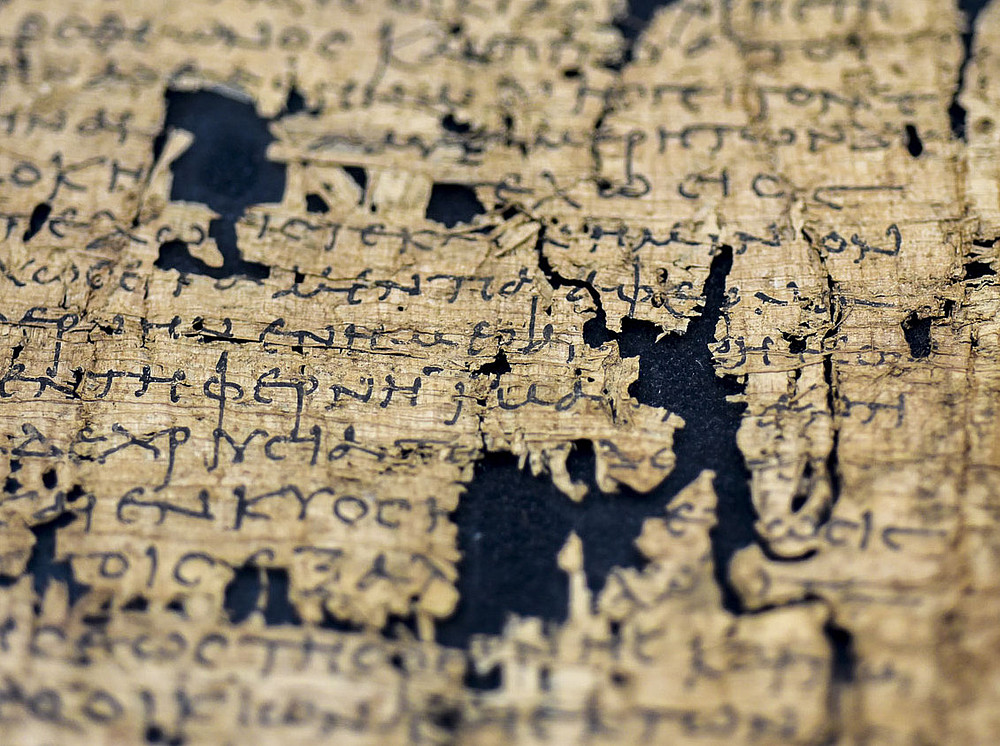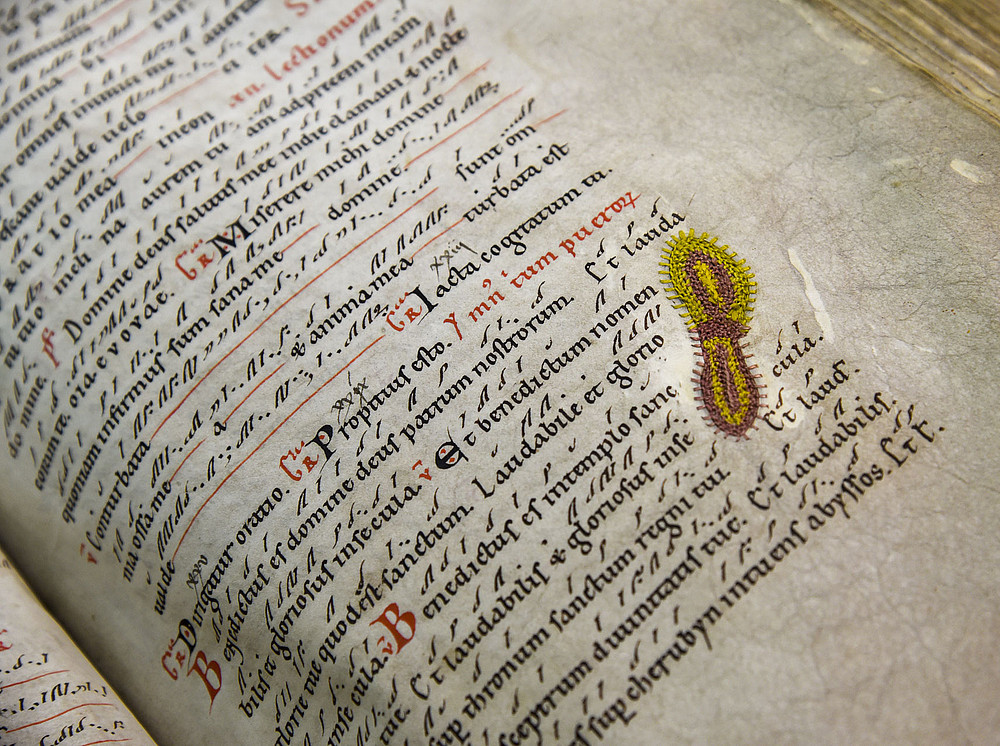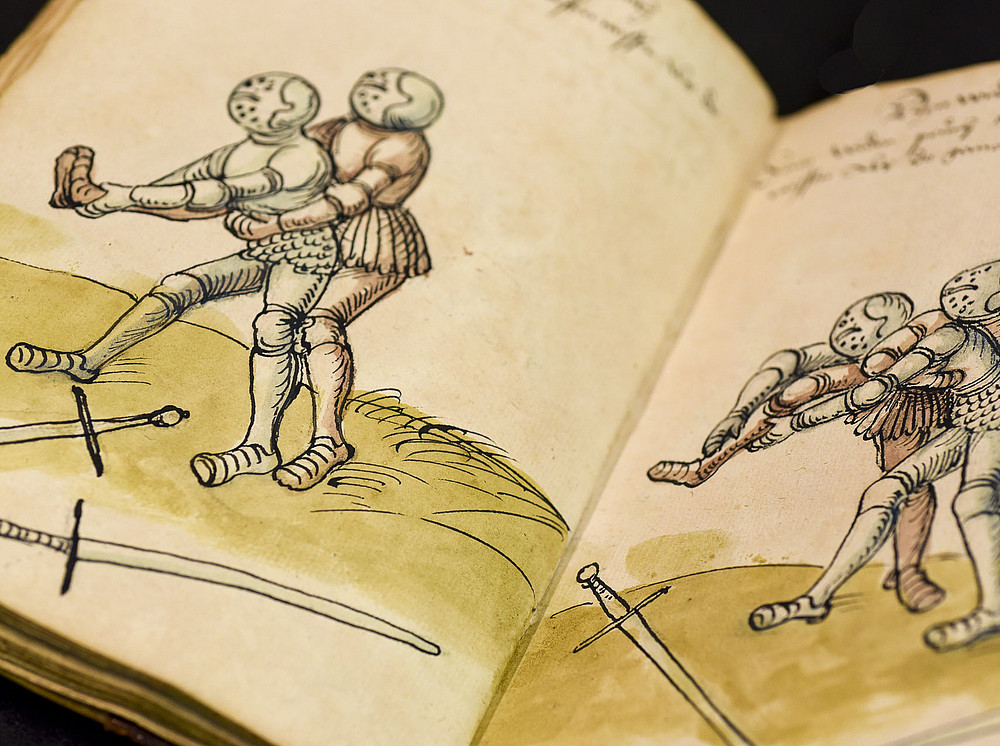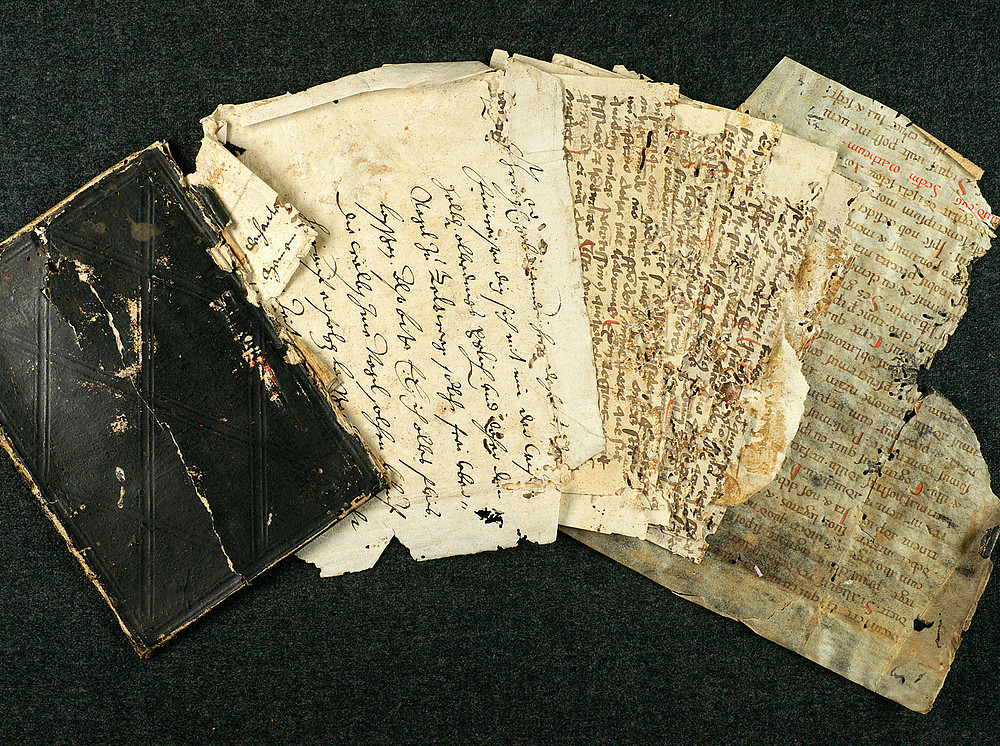Manuscripts
Among the oldest and most valuable holdings of the university library Graz are the approximately 2,200 manuscripts and bequests, about half of which date from the Middle Ages, the rest from modern times. The majority of the collection is made up of the holdings of domestic monasteries that were dissolved over the centuries, either through expropriation or through their extinction due to a decline in membership. Some papyri or oriental manuscripts came into our holdings via detours from other cultural circles, such as the five Georgian manuscripts that found their way to Graz through the estate of the linguist Hugo Schuchardt. Among the most important documents from modern times are the letters from Johannes Kepler to the Graz mathematician and Jesuit Paul Guldin.
To the repository Special Collections | DIGITAL.
Papyri
The oldest preserved written testimonies that are in our collections are papyri. The texts are written on the prepared pulp of papyrus grass, which is still easy to find in the Mediterranean region.
We have only a few dozen papyrus fragments from Egypt. The oldest of them is dated to the third century BC. Mainly texts or even single words in Greek are noted on the filigree writing carriers. All our papyrus fragments are indexed and accessible via databases.
Here you can find information about the Graz Mummy Book.
The papyri can be found on unipub Digi | PAP - Papyri.

Medieval manuscripts
Today, about 2,200 manuscripts are kept at the Graz University Library. This is a considerable collection - the second largest within Austria, after that of the National Library in Vienna. The manuscripts came to Graz mainly in connection with the dissolution of the monasteries and their libraries at the end of the 18th century.
The older part of these handwritten books still has parchment as a writing medium, a very durable material that can survive centuries without damage under climatically suitable conditions (temperature and humidity). Paper as a writing material became widespread in Europe from the 13th century onwards.
The vast majority of our late antique and medieval written heritage is in Latin language and script, although the amount of text, especially in German, increased steadily after the turn of the second millennium.
The manuscripts can be found on unipub Digi | SCRIPT - Manuscripts digital.

Modern manuscripts
Even though printing spread rapidly throughout Europe from the second half of the 15th century, books continued to be written by hand. Some genres were virtually predestined for this, such as lecture notes, excerpts or recipe books. Other contents were never printed for various reasons. The handwriting of books reaches far into the 20th century, if only we think of the many hundreds of handwritten dissertations.
The manuscripts can be found on unipub Digi | SCRIPT - Manuscripts digital.

Manuscript fragments
In many books of modern times and already of antiquity, fragments of older books or writings can be found somewhere in the book structure, as a historical repair or as (part of) the binding(s). Often it was parchments that were reused in such a way (historical recycling).
In our collections there are hundreds of parchment fragments alone. On the one hand, these have been detached, that is, they have been detached from another book in earlier times. Often, however, they are still in place (in situ), for example, when they serve as a dust jacket for a printed book and are pasted on.
We consider such leaf fragments - which in the vast majority of cases are described - as valuable and extremely old sources. It is an arduous but rewarding task to index and document these often last pieces of otherwise non-preserved books. Part of this "sunken library" can already be viewed online.
The fragments can be found on unipub Digi | FRAG - Fragments.
